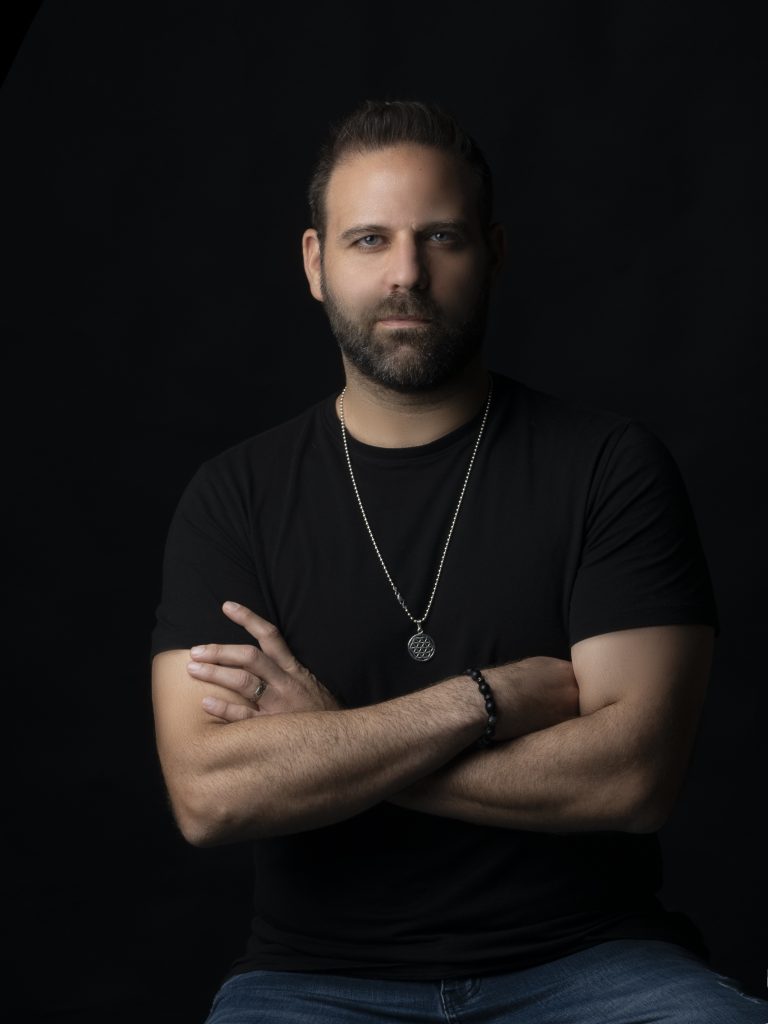
Matan Caspi, renowned as a four-time Beatport-nominated Best Progressive House Artist and one of the top 10 most charted artists in the Progressive House genre on Beatport, has emerged from the vibrant Israeli underground scene as a beacon of innovation in the global electronic music landscape, blending sophisticated beats, diverse melodies, and driving grooves across an impressive discography on labels like Universal Music, Global Underground, Anjunabeats, Spinnin’, Spinnin’ Deep, Armada, Deeperfect, Buddha Bar, Pacha, Definitive Recordings, JEE, Enormous Tunes, Sprout, Sirup Music, and Doorn Records. Co-owning the successful imprint Outta Limits Recordings with Stan Kolev, he has garnered acclaim from industry titans such as Carl Cox, Tiesto, Above and Beyond, Armin Van Buuren, Eric Prydz, Paul Oakenfold, and many more, while his major collaborations include tracks with Asher Swissa, Yahel, D-Formation, and Kamiel Kiko, and he has captivated audiences at venues worldwide, performing in hotspots like Brazil, India at Ignite Superclub, Ukraine, Costa Rica, Australia, Sri Lanka, Thailand, Switzerland, and the US at spots like Primary in Chicago and Moonrise in Brooklyn.
With his most recent release, ‘Amour’, continuing to inspire with its cosmic vibes, Matan Caspi‘s journey remains a testament to unwavering production standards—now, let’s delve into his creative process and insights in this exclusive written interview.
How did you decide which genres to blend into your signature progressive house sound for a track like “Amour”?
I’ve always been drawn to the space between progressive melodic house textures, deep tech grooves, and even Afro house lately. For Amour I wanted to blend those worlds, keeping the hypnotic tribal rhythm that drives the dancefloor, but also weaving in cosmic organic melodies like the trumpet licks and the vocal. I was trying to find the balance between these genres without making it sound weird or overcooked. It was a very long and evolving process. It’s still a challenge, but one I enjoy.
What’s the one production tool or technique you relied on most to craft the driving grooves in “Amour”?
My beat and groove always start with layering percussive elements in a very detailed way. For me, the groove is everything. I sometimes rely on subtle swing and micro-shuffling hi-hats and percussion to bring a human pulse. Beyond that, sidechain dynamics and automation played a big role in keeping the energy flowing without overwhelming the space.
How does co-owning Outta Limits Recordings with Stan Kolev shape the creative direction of your music?
For us Outta Limits is more than a label, it’s our home and our creative playground. Working with Stan, we always push each other and challenge one another to explore new directions without losing the essence of our sound. This year is extra special because we are celebrating 20 years of the label. That history shapes not only the music we put out, but also the responsibility to keep innovating. Of course, running the label keeps us in touch with the broader scene, but it also gives us the freedom to release music on our own terms.
Growing up in Israel’s underground scene, what was a defining moment that pushed you toward becoming a global electronic music artist?
Since childhood I was connected to music and grew up in a musical house where guitar and piano were always present. I started engaging with electronic music when I was around 19 back in the 2000 and began producing deep house at first, but then I got drawn into psytrance and was involved in that scene for a couple of years. Later, I moved to Europe for seven years, and that’s where I started gravitating back toward deep and progressive. Interestingly, my recognition in Israel came from outside and not the other way around, which gave me the perspective to go global.
What’s the story or emotion you wanted to evoke with the cosmic melodies in “Amour,” and how did you achieve that in the studio?
First of all I wanted it to groove the dancefloor. The melodies came only after the beat was done. I didn’t think about a certain emotion I wanted to pass on, it was more about what came out naturally while I was searching for ideas. One sound brought another and it built up through the production process. When the groove was ready, I closed my eyes, visualized myself on the dancefloor, and asked what emotion I would want to feel in that moment. Then I searched for something that would hit that spot, then the vocal, bassline and trumpet came along and created the theme of the track.
With support from legends like Carl Cox and Tiesto, how do you handle the pressure to keep innovating in a competitive genre?
For me it’s more motivation than pressure. When artists of that caliber play your music, it reminds you that authenticity is what really resonates. The competition fades when you focus on evolving your own sound. I don’t chase or follow trends, but I do dream to create one someday that others will follow and be inspired from.
How did you balance intricate production with dancefloor energy in “Amour,” especially with its tight 4:46 runtime?
That’s a very good question and one I asked myself to this day)). Could be it’s because I made a slight shorter intro and outro, but honestly it was the first time I didn’t even look at the timestamp. I just flowed with the buildup, made breaks where I felt they should be, and when I finished, I realized it was only 4:46. At first, I thought of prolonging it, but when I played it and heard it in the car a few times, I realized it was perfect and nothing needed to be stretched. I even have a saying now: if you can’t pass the feeling and idea of a track in five minutes, then something is probably wrong.
When you’re blending diverse styles, what’s the toughest creative decision you face to avoid losing your signature sound?
I think the hardest part is knowing when to stop. It’s tempting to keep adding layers or pulling too far toward one style. With time you learn to accumulate discipline in keeping the core identity intact and follow the ‘less is more’ vision. At the end, I think the blend of styles actually became my signature sound.
Looking back at your career, how do you stay grounded when your music is celebrated by both fans and industry giants worldwide?
I stay grounded by always remembering that we are all human and each one of us has something to offer to this world. It doesn’t matter if you are a musician or a cleaner, every soul has its purpose and path in life, so it’s important to stay humble. I’m also surrounded by great people, family, and friends. My wife and daughter are my anchor, they remind me of what’s truly important. Playing tennis, surfing, and keeping a healthy lifestyle are also my way of staying balanced.
If you could share “Amour” with someone from your early days in the underground scene who inspired you, who would it be, and how do you think they’d react to its sonic pull.
That’s really hard to say because I was a bit of a lone wolf back then. I was too busy making music in the studio to socialize much. But if I had to pick, probably Stan, since we go way back. I think he would instantly connect with the hypnotic flow and recognize how far we’ve come since those early days. (By the way, he loved the track.)
Stream ‘Amour’:
Follow Matan Caspi:
Website – Beatport – Instagram – Soundcloud – Youtube – Facebook – Spotify

